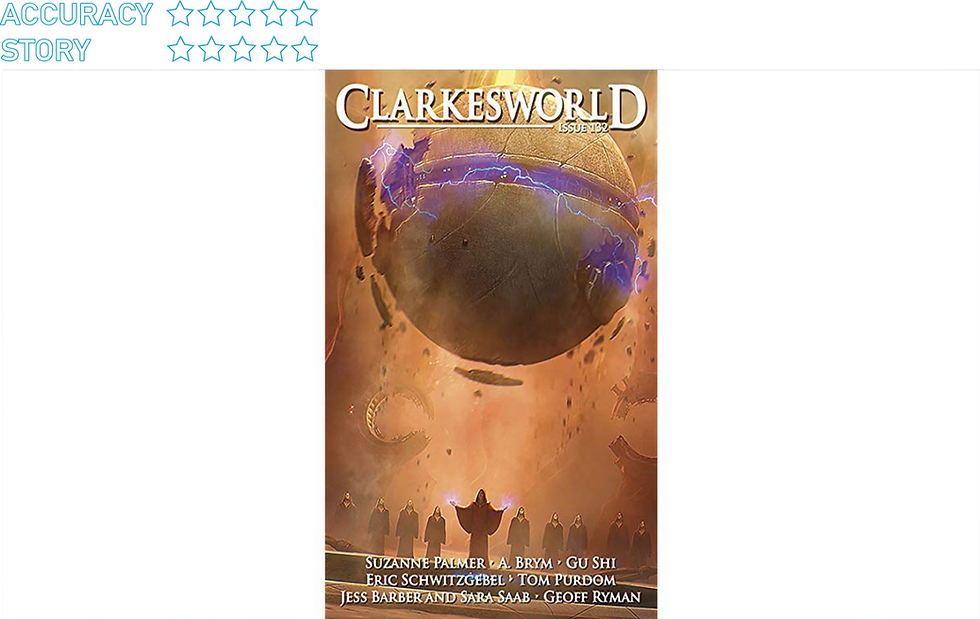The Secret Life of Bots: analogical reasoning by the most spunky, lovable robot since R2D2 saves the
Recommendation: Enjoy this 2018 Hugo Award winning Novelette and think about how wonderful life will be when robots can reason like Robot 9
Robots: miniature insect-like robots

The Secret Life of Botsis a clever space opera where the little robot saves the ship. And Earth. And probably all of humanity. Which is fine, because the author, Suzanne Palmer, a computer sys adm by day and writer by night, sets up a science narrative where this outcome is both touching and believable. It won the 2018 Hugo for best novelette, which is writing between 7,500 and 17,500 words, or somewhere between 15 and 40 pages. A perfect quick read or listen!
At times a quest, a comedy, a monster to be overcome, and a rebirth story, The Secret Life of Botsalways sustains a hard science fiction flavor. It’s a bit like Vinge’s short story classic, Long Shotin which is featured in my Robotics Through Science Fiction book, only with a quirky maintenance robot and the ship also has a human crew. Though the plot sounds familiar, it is executed in a captivating way. Robot 9 is an older bot- but that doesn’t mean it's not able to do its job; just as the story is a tale as old as time, The Secret Life of Botsdoes its job by telling us that tale from a new perspective.
The new perspective is that Robot 9 is able to innovate through its analogical reasoning abilities. Analogical reasoning is problem solving using analogies or metaphors. The analogy helps clarify some aspect of the problem or spur a solution. People use analogies all the time, for example we use the phrase “that’s like rearranging deck chairs on the Titanic” to convey the action isn’t going to solve the real problem. Steve Jobs' analogy that computers were a bicycle for the mind conveyed that computers were fun tools, not replacements or threats. Senator Ted Stevens famously made an almost good analogy with his statement that "The internet is not a big truck. It's a series of tubes." Notice that in all three analogies we somehow ignored the parts that didn’t quite fit, or in Ted Stevens case, we immediately zoomed in on them. How did we do that? No-one really knows and certainly no one really knows how to capture it computationally.
What makes analogical reasoning so hard for artificial intelligence is why it is so common in IQ tests: people can do it without a lot of prior knowledge, often just by visually looking at pictures of the objects or about things they don’t have any detailed knowledge about.
Remember all those questions that went like this:
Apple is to fruit as celery is to ??, with the smart answer to ?? being “vegetable.”
Those questions were testing your analogical reasoning abilities and the better you did on them, the higher your IQ.
Analogies are about noticing similarities between concepts or situations, formally called domains, then using those similarities to solve the current domain or problem. As the Stanford Encyclopedia of Philosophy puts it:
S is similar to T in certain (known) respects.
S has some further feature Q.
Therefore, T also has the feature Q, or some feature Q* similar to Q.
People are great at analogies or understanding them, computers have made little or no progress. Instead, artificial intelligence relies on three other forms of reasoning to generate new concepts: induction, deduction, and abduction.
induction is generalizing a concept from examples or observations, which is used extensively in machine learning. This sounds a bit like analogical reasoning because you have to learn the analogy, right? But analogical reasoning is about mapping the salient points of one domain onto another, finding that isomorphism.
Deduction is the Sherlock Holmes style of reasoning which involves determining what logically follows from a set of axioms. It is about whether a concept is true or not given the facts.
Abduction is a form of reasoning where assumptions are generated to explain observations. For example, if a robot were to observe that some light was not working, it can hypothesize that the light burned out, the electricity is off, the alien has reached the engine room of the space ship, etc., to explain why the light was not working.
Neither induction, deduction, or abduction was of value to Robot 9 in innovating a solution to the problem at hand. Deduction and abduction may have been useful in evaluating whether the proposed solution would work (was there a flaw in the implementation? let’s hypothesize all the things that could happen?), but Robot 9’s real innovation was being able to consider even relatively unrelated domains in comparing similarities.
To end with an analogy: The crew takes Robot 9 for granted; we take for granted that Palmer will produce more great robot stories. Clarkesworld, the publisher, has a free online version- print and audio- at http://clarkesworldmagazine.com/palmer_09_17/
- Robin
